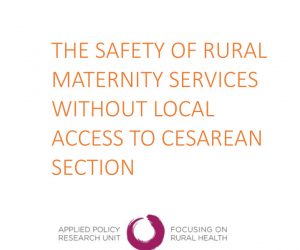
Link to article: https://www.ncbi.nlm.nih.gov/pmc/articles/PMC5764719/
This review describes how access to health care has been a significant challenge for Indigenous people in Saskatchewan, specifically in northern rural communities.
There have been pilot projects implemented and one of them is the use of Remote Presence Robotic Technology (RPRT) as a form of telemedicine. It provides a sense that a health care practitioner is by the patient’s side and enables health care delivery in real time. There are other piloted projects that have successfully used digital technology to close the gap in access of health care delivery through modalities such as robotic ultrasonography for prenatal care, using cell phones for HIV positive patients to improve compliance with anti-retroviral therapy and using technology to aid in better analysis of lab samples.
These have shown to enhance access delivery but also provide comfort to patients. Since a lot of these communities are quite remote, it prevents unnecessary transportation for these communities away from their families.


